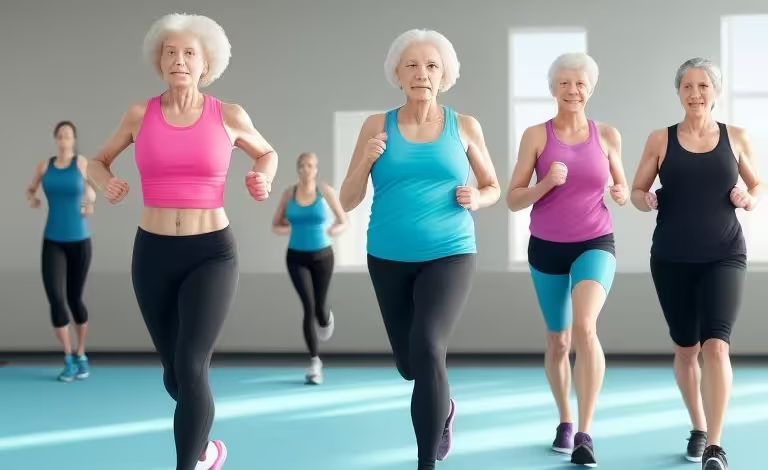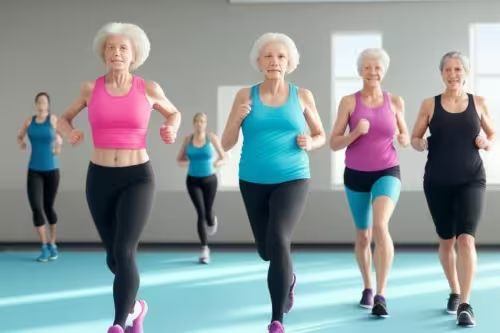

5 Ways Regular Exercise Boosts Women’s Longevity
Regular Exercise: Why Women’s Workouts Are Key to Longevity
Understanding the impact of exercise on health reveals significant benefits, especially for women. Recent studies highlight how tailored exercise can enhance health outcomes based on gender differences. According to research from the Journal of the American College of Cardiology, women who engage in regular physical activity reduce their risk of early death by up to 24%. In contrast, men see a 15% reduction under similar conditions, underscoring the need for gender-specific exercise guidelines.
1. Optimal Exercise Intensity and Duration
The study delves into how exercise intensity and duration affect mortality risk. Moderate activities like brisk walking or gardening benefit women the most, with 300 minutes weekly lowering mortality risk by 24%. Men, on the other hand, benefit from vigorous workouts such as running or swimming, reducing their risk by 19% with 110 minutes weekly. Notably, women achieve comparable results with just 57 minutes of vigorous exercise weekly, highlighting gender-specific exercise advantages.
2. Strength Training for Longevity
Strength training is particularly beneficial for women. Regular strength training can reduce the mortality risk more significantly for women compared to men. These findings underscore how different exercise types influence health outcomes based on gender.
3. Enhancing Mental Health
Regular exercise not only boosts physical health but also significantly improves mental well-being. For women, engaging in regular physical activity can reduce the symptoms of depression and anxiety, enhance mood, and promote a sense of overall well-being. The endorphins released during exercise act as natural mood lifters, providing a powerful tool against the stresses of daily life.
4. Hormonal Balance and Menopause Management
Exercise plays a crucial role in managing hormonal changes, especially during menopause. Regular physical activity helps in maintaining hormonal balance, reducing menopausal symptoms such as hot flashes, night sweats, and mood swings. Additionally, exercise can help in managing weight gain and improving bone density, both of which are common concerns during menopause.
5. Cardiovascular Health
Women who engage in regular exercise enjoy better cardiovascular health. Physical activity strengthens the heart, improves circulation, and helps maintain healthy blood pressure levels. This reduces the risk of heart disease, which is a leading cause of death among women. Activities such as aerobic exercises, including walking, running, and cycling, are particularly effective in promoting heart health.
Study Methodology and Considerations
The study analyzed survey data from over 400,000 individuals from 1997 to 2017, linking self-reported exercise habits to mortality rates. While insightful, the reliance on self-reported data introduces some uncertainty. It’s essential to consider these limitations while interpreting the results.
Future Research and Recommendations
Further studies are crucial to better understand gender-specific exercise benefits and refine personalized exercise prescriptions, particularly for women undergoing life stage changes like menopause. This can lead to more effective and targeted health recommendations.
Motivating Inactive Individuals
These findings serve as motivation for physically inactive individuals, especially women, to increase leisure-time physical activity. By emphasizing the significant reductions in mortality risk associated with regular exercise, the study encourages prioritizing health through physical activity. Simple changes, such as incorporating short walks or light gardening into daily routines, can make a substantial difference.
Practical Tips to Get Started
- Start Small: Begin with manageable activities, such as short walks, and gradually increase the duration and intensity.
- Mix It Up: Incorporate a variety of exercises, including strength training, aerobic activities, and flexibility exercises.
- Find a Buddy: Exercising with a friend can boost motivation and make workouts more enjoyable.
- Set Realistic Goals: Aim for achievable milestones to maintain motivation and track progress.
- Listen to Your Body: Pay attention to how your body feels and adjust your workouts accordingly to avoid injury.
In conclusion, regular exercise offers a multitude of benefits for women’s longevity and overall health. Tailored exercise recommendations can optimize health outcomes based on gender-specific differences. By understanding and implementing these practices, women can significantly enhance their quality of life and reduce the risk of early death. Future research aims to refine guidelines and promote personalized approaches to physical activity prescriptions, ensuring that every woman can benefit from the power of regular exercise.
